Flea & Tick Tech
Dr. Katy & Janine Robertson
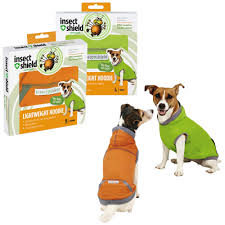 An old technology that embeds pesticide into clothing and fabric is now being used on pet wear, bedding and toys. PetEdge has introduced Insect Shield, which is a tick and flea deterrent used in everything from bandanas to coats. Dr. Katy explains how it works.
An old technology that embeds pesticide into clothing and fabric is now being used on pet wear, bedding and toys. PetEdge has introduced Insect Shield, which is a tick and flea deterrent used in everything from bandanas to coats. Dr. Katy explains how it works.
You can now protect your pets from insects without using any chemicals, with Insect Shield Repellant Apparel and Gear. So why are Insect Shield products different? These products actually have a repellency that is built right into their fabric fibers. Insect Shield products combine the patent-pending Insect Shield process with a proprietary formulation of the insect repellent permethrin - resulting in effective insect protection that lasts the expected lifetime of the apparel of about 75 washings.
Insect Shield products include t-shirts, bandanas and even dog beds and blankets. There's nothing you have to do, the products are ready to use upon purchase.
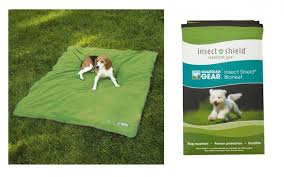 Insect Shield Repellent Apparel has been proven and registered to repel mosquitoes, ticks, ants, flies, chiggers and midges. Insect Shield Repellent Gear has been proven and registered to repel mosquitoes, ticks, fleas, and flies. The EPA requires extensive effectiveness data to prove a product's ability to repel insects. Many species and varieties of these insects have been tested, including those that can carry dangerous diseases.
Insect Shield Repellent Apparel has been proven and registered to repel mosquitoes, ticks, ants, flies, chiggers and midges. Insect Shield Repellent Gear has been proven and registered to repel mosquitoes, ticks, fleas, and flies. The EPA requires extensive effectiveness data to prove a product's ability to repel insects. Many species and varieties of these insects have been tested, including those that can carry dangerous diseases.
Insect Shield for pets puts insect repellency near your dog's skin, instead of directly on it, and the protection is invisible. Also, the repellency is long lasting, so no re-application is needed. Insect Shield does not have to enter into your dog's system for it to be effective. Nor do the insects have to bite in order for the protection to work. You simply have to put Insect Shield dog apparel on your pet or have them use the products and it helps ward off a variety of pesky and dangerous insects. Insect Shield protection is bonded to the textile so it cannot be rubbed off.
Dr. Katy is an associate veterinarian at the Belle Haven Animal Medical Centre and Janine Robertson is the Marketing & Public Relations Manager for Insect Shield.
http://www.insectshieldforpets.com
Experiences You Can Share With Your Pets
Heather Eisenstadt, Pets Welcome Here
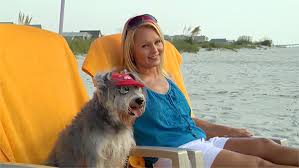 Heather Eisenstadt is the Creator and Executive Producer of Pets Welcome Here.
Heather Eisenstadt is the Creator and Executive Producer of Pets Welcome Here.
Pets Welcome Here is a new TV show about all the exciting experiences you can share with your pets in incredible destinations throughout the United States. Heather states it is a great country if people know where to go and what to do with their pets.
Heather claims that the state of Florida is very pet friendly and that they want to be known as such. That is why they shot the first episode in the Sunshine State where two hosts and canine stars explore four top pet destinations.
They started out in fabulously funky Key West. The Conch Republic is incredibly pet friendly. From Duval Street to Mallory Square, dogs are welcome everywhere.
Next they went to the beautiful white sand beaches of the Emerald Coast for some dog friendly watersports, deep-sea fishing and great pet friendly seafood restaurants.
After that they explored the arts and culture of luxurious Winter Park, where they discovered everything from dog friendly restaurants to dog friendly Stand Up Paddle.
Finally, they ended up in America's Oldest City, St. Augustine, where they checked out the pet friendly Fountain Of Youth and the famous Pup Crawl, a historical walking tour just for people and their dogs.
According to Heather, it couldn't have happened without their incredible sponsors. Toyota provided them with a 2016 Rav4 and Prius that they drove throughout the show. Their canine stars loved the dog friendly features. Rokstraps, the no jolt leash, is their pet safety sponsor. Their leashes are specially made so if your dog pulls, you don't get that jolt in your arm or shoulder like with ordinary leashes. And Top Dog Pet Travel sponsors the Pet Travel Tips. Top Dog Pet Travel is the only online travel agency where you can book pet friendly travel AND has a travel agent, to create custom pet friendly packages so you don't have to do it yourself.
The show is being syndicated on local affiliate stations all over the county from now until the end of July. To find your station, day and time, go to their website at petswelcomehere.tv and click on the TV Schedule. If you don't see your local station, contact them and tell them you want to see Pets Welcome Here.
An Effective Way To Protect Your Pet From Loss And Theft
Doc Halligan, Lucy Pet Foundation
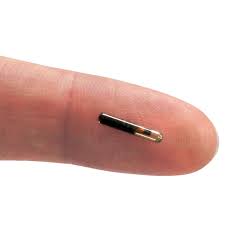 Because identification tags on a pet's collar or halter can come off, microchipping is an additional way to ensure that your pet will be returned to you if lost. However, microchips should not be used as a substitute for standard ID tags. A microchip is a tiny computer chip, the size of a rice grain, with an identification number programmed into it. It is not a tracking device.
Because identification tags on a pet's collar or halter can come off, microchipping is an additional way to ensure that your pet will be returned to you if lost. However, microchips should not be used as a substitute for standard ID tags. A microchip is a tiny computer chip, the size of a rice grain, with an identification number programmed into it. It is not a tracking device.
These chips were originally developed to identify livestock. The chip is injected with a hypodermic needle deep under the skin of your pet's neck, usually between the shoulder blades. The injection itself is the same as any regular vaccination and will cause no physical side effects.
A special scanner is used to send a radio signal through the skin of your pet to read the chip. The animal feels nothing as the scanner is passed over him and the chip is read. The microchip number is then relayed to the scanner, where it is displayed. No two microchip numbers will ever be the same, so you can be assured that your pet's microchip number is totally unique.
The chip itself has no power supply to replace or moving parts to wear out, and therefore can be expected to last decades, well beyond the lifespan of your pet. Your pet's number is then registered to the chip company's database, which will trace your pet back to you if found. But if you move your residence, you must contact the chip company, pay a small fee, and give them your new address and contact numbers.
All animal shelters and veterinary clinics have scanners that will read chips. After a scan, the shelter or vet clinic calls in the code to the chip company's database of pets with identifying microchips, and the lost animal's owner will be contacted immediately, providing the owner has a current phone number or address on record.
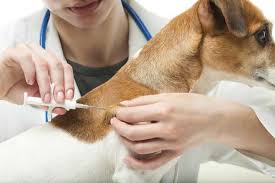 Puppies and kittens can be microchipped as early as 8 weeks old. Microchips are suitable for almost any pet, including horses, reptiles, rabbits, birds, exotics, and even fish. It is an injection and while the needle is sharp, most animals don't even react. (I've even had clients ask about chipping people, but to date, it hasn't happened—although you never know!)
Puppies and kittens can be microchipped as early as 8 weeks old. Microchips are suitable for almost any pet, including horses, reptiles, rabbits, birds, exotics, and even fish. It is an injection and while the needle is sharp, most animals don't even react. (I've even had clients ask about chipping people, but to date, it hasn't happened—although you never know!)
A microchip is completely permanent, and can't be cut off or altered. If your pet is ever stolen and sold to a research facility, it will be returned because most research facilities won't take an animal that has a microchip implant. I've seen a small percentage of microchips move or migrate, which can make it more difficult for the scanner to pick up. However, this is rare, and if they do migrate, they don't cause any problems with your pet, but may be missed by the scanner.
Microchips are very affordable. The cost of getting your pet microchipped can range from $25 to $65, depending on where you have the procedure done. If you plan on taking your dog overseas, make sure that you get a universal microchip.
Again, microchips should not replace a collar and identification tag. Collars and tags are the best insurance you can provide to ensure your pet's safe return should it become lost, but even those sometimes fall off. So make sure you pet is microchipped, and has a collar with an identification tag.
The Mission of The Lucy Pet Foundation is to reduce pet overpopulation by having mobile spay/neuter clinics across the country and to support causes that benefit animal welfare. The Lucy Pet Foundation currently has two buses that travel around Southern California focusing on spaying and neutering. These buses are state of the art surgery units. Their next focus is in generating more funds to expand the work of these buses and have more across the country.
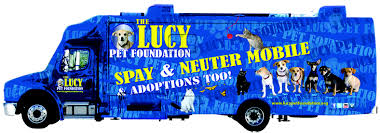 The Lucy Pet Foundation not only offers free and reduced spays and neuters, they also do microchipping, vaccines and de-wormings. Spaying and neutering is not only great for pet population control, but it has been proven that an animal will live on an average of 40-percent longer after having this surgery.
The Lucy Pet Foundation not only offers free and reduced spays and neuters, they also do microchipping, vaccines and de-wormings. Spaying and neutering is not only great for pet population control, but it has been proven that an animal will live on an average of 40-percent longer after having this surgery.
Upcoming Clinics
Free Spay & Neuter for Los Angeles City Residents! Here is a list of upcoming free or reduced fee mobile spay and neuter clinics in California:
Call for more information, questions and to reserve space to get on the list: (855) 499-5829
May 28, 31: Superior Store Pacoima, 9801 Laurel Canyon Blvd., Pacoima, CA Spay/Neuter APPOINTMENT ONLY; Vaccine Clinic 10:00am-2:00pm
May 30: Food 4 Less, 1748 West Jefferson Blvd., Los Angeles, CA Spay/Neuter APPOINTMENT ONLY; Vaccine Clinic 10:00am-2:00pm
County and City Vouchers accepted. But remember, you must get on a list to have your pet seen at these locations. Please call The Lucy Pet Foundation toll free at 1-855-499-5829 or Email: Info@lucypetfoundation.org to schedule an appointment, or register at the events.
See the current list of clinics at http://www.lucypetfoundation.org.
http://www.lucypetproducts.com
 Get Your Pet To the Vet Safely with No Escapees - Dr. Debbie
Get Your Pet To the Vet Safely with No Escapees - Dr. Debbie
A frightening situation occurred the other day at my veterinary hospital. Working inside my office, I could hear a woman's shrieks coming from the parking lot. I ran outside to find a woman with one dog on a leash, and the other dog skittering about the parking lot - the result of a slipped collar. The owner would approach the panicked dog and he'd retreat, darting under nearby cars. Those familiar with our hospital location understand its proximity to a busy intersection. Should the dog run in the wrong direction, he'd meet up with 45 mph traffic.
My staff was outside in moments to assist the owner in retrieving her dog and safely escorted everyone into the building. Thankfully my client's few minutes of terror ended uneventfully. But that's not always the case. I've seen dogs run straight into the road, cat's leap from a family member's arms, and owners dive into oncoming traffic trying to catch an escaping pet.
The lesson is simple. Don't underestimate your pets' fears. Fear of car travel, new places or the veterinary office can cause a pet to behave in unpredictable ways. If you know your pet to be nervous with new people or new situations, be especially vigilant when transporting your pet in a vehicle.
Identify Your Pet
Use two methods of identification for best insurance your pet is returned to you if lost. Permanent identification with a microchip is a must, and should be complimented with a collar and ID tags.
Restrain Pet in Vehicle
Keep your pet secure during travel and when the car door opens by using a doggie seatbelt. Small dogs and cats should be housed in a pet carrier which is secured with seatbelt to avoid undue carrier movement during travel. Do not allow cats and small pets to roam freely in the car. Cats have been known to take cover under car seats which may require sedation or seat removal to extract kitty from her hiding place.
Check for Proper Fit
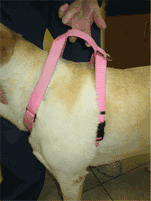

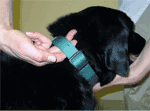 A proper fitting collar allows 2 finger widths between the collar and pet's neck. Allow more than, and should your pet put on the brakes, he'll easily slip out of the collar. Poor fitting harnesses are just as dangerous and allow gap room which allows a back-peddling pet to wiggle out. Not sure if the collar is too loose? Snug the collar up one fitting in anticipation of your trip to the vet.
A proper fitting collar allows 2 finger widths between the collar and pet's neck. Allow more than, and should your pet put on the brakes, he'll easily slip out of the collar. Poor fitting harnesses are just as dangerous and allow gap room which allows a back-peddling pet to wiggle out. Not sure if the collar is too loose? Snug the collar up one fitting in anticipation of your trip to the vet.
Try Other Collar Styles
Even if you don't normally use a choker or pinch collar, consider using one when going to the vet's office. For thick necked dogs with smaller head size, try the Martingale collar, a fabric and metal combo collar that snugs down should your dog try to back out. Boisterous dogs that jump and leap when on leash may benefit wearing a head collar that fits over the muzzle. Ensure your collar choice is properly fitted, since any of these styles can fail if improperly fitted or used incorrectly.
Call Ahead
If you anticipate difficulties getting your pet to the vet's office, call ahead. Veterinary staff members are on the ready to help ensure your pet's visit is a safe one.
So, take a few minutes to consider your pet's travel safety before heading out on that next car trip, whether it is to the park, groomer, or veterinary office. Your four legged friend will thank you, but may pout on the way there.
Featured veterinarian known as "Dr. Debbie" on national pet radio program, Animal Radio. Ebook author of "Yorkshire Terriers: How to Be Your Dog's Best Friend"; "Pugs: How to Be Your Dog's Best Friend"; "Mini Schnauzers: How to Be Your Dog's Best Friend"; and "Shih Tzu: How to Be Your Dog's Best Friend."
http://www.drdebbie.net
No More Dog Hugs, Kisses, Sleeping in Beds or Feeding the Kids Vegetables
Robert Semrow, Animal Radio Listomania
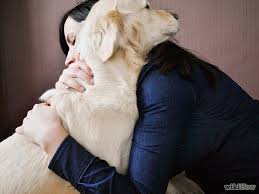 Ok, so recently a research study concluded that most dogs don't like to be hugged. This comes on the heels of other studies and Internet breaking shockers like you shouldn't kiss your dog or let them kiss you, don't let them sleep in bed with you and also human children don't like to eat their vegetables. OK, the last one was obviously given to me by my young daughters…nice try, go eat some broccoli!
Ok, so recently a research study concluded that most dogs don't like to be hugged. This comes on the heels of other studies and Internet breaking shockers like you shouldn't kiss your dog or let them kiss you, don't let them sleep in bed with you and also human children don't like to eat their vegetables. OK, the last one was obviously given to me by my young daughters…nice try, go eat some broccoli!
This recent study set the Internet a blaze with the something that when I first heard it I went - Duhhhh! Then I said, "Do we really need a researcher to tell us that hugging dogs can make them uncomfortable?" We were all kids and if being uncomfortable was the criteria I have a lot of aunts, uncles and others who needed to know that I didn't feel comfortable or want their hugs, kisses and pats on the head.
I guess for me, this falls in to the area of knowing your pet. You know if your pet wants to be hugged, played with or is stressed. And if you don't, you're probably going to ignore this study anyways. What I also love is that many of the headlines screamed dogs don't want hugs therefore dogs shouldn't be hugged. Well, I‘ve got news for the headline writers, Dr. Internet and others, my dogs love being hugged! In fact, mine line up each morning as the kids are getting ready to go to school to get- brace yourself Dr. Internet - hugs, kisses and belly rubs from my daughters and me.
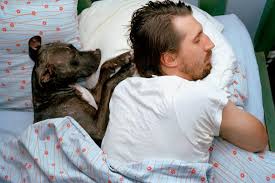 We don't force them to hug us or accept our hugs. We also don't demand they be there if they aren't feeling up to it. If your dogs don't want something, and it's not harmful to them, I have a hard time thinking of a reason to force them to do something.
We don't force them to hug us or accept our hugs. We also don't demand they be there if they aren't feeling up to it. If your dogs don't want something, and it's not harmful to them, I have a hard time thinking of a reason to force them to do something.
I understand the concerns of the potential lashing out. No one wants that and no one should expect anyone wants a hug from them - human or canine. Still, the overhyped nature of this, and maybe it's just me… acted as if over hugging and being kind toward pets was somehow causing an epidemic that would bring the uniting of dogs and cats to rise up and make us regret loving our four-legged family members.
 Well, I know my dogs and I also know when they want to be left to themselves. I have shown my daughters how to be in tune with their temperaments and the needs of our pets. I watch and observe and give them the physical and emotional space they need, which can vary each day.
Well, I know my dogs and I also know when they want to be left to themselves. I have shown my daughters how to be in tune with their temperaments and the needs of our pets. I watch and observe and give them the physical and emotional space they need, which can vary each day.
Also, it's a great way to know when Zoey, in particular isn't feeling well. She is our bundle of love who wants nothing more than to be in contact with you and near you. She'll kiss you if you ask for a kiss and if you don't give her one she just might stomp her feet to say, and I know I'm no researcher, but I'm certain she's saying Dad, where's my smooch! Don't worry Zoey, I'm not going to pressure you for hugs, kisses or to have you sleep next to me…however, Zoey, you are always welcome to give or receive hugs as you wish.
Know your pets and know their limits and love languages. Share your pet's views on hugs and more on our Animal Radio Facebook Page.
http://petworldinsider.com
 Animal Radio News - Lori Brooks
Animal Radio News - Lori Brooks
Xylitol (Found in Many Products) is Deadly to Pets
Here's an alert for all dog lovers that you may already know but the FDA has issued a warning that xylitol could be deadly if given to your dog. Xylitol gives sugar-free gum and many other products like breath mints, baked goods, nut butters, chewable vitamins, mouthwash and toothpaste their sweetness, but it is very dangerous to dogs as proven by the many reports the agency has received in recent years of dogs being poisoned by xylitol. Xylitol isn't dangerous to people, but dogs absorb it quickly, which can spike their insulin levels, causing dangerously low blood sugar that can be life-threatening if it is not treated right away. Symptoms include: lethargy, weakness, lack of coordination, staggering and seizures, but be aware that symptoms may not appear for as long as 24 hours. And if you have cats, they are not tempted by sweets like dogs are, so xylitol isn't as big of a threat to them seeking it out.
 Shelter Dog Finds Home in Shelter
Shelter Dog Finds Home in Shelter
Ann has been a shelter dog for more than two years, but don't be sad for her. She's in a good place, still in a shelter, but it's a shelter for homeless men where Ann lives now and the guys all love her. For two years, Ann, a chocolate Labrador-Rottweiler mix has been the live-in companion of homeless men who temporarily reside in the Pittsburgh area shelter, which is housed in a former church building. You have to love that the homeless shelter rescued Ann when she was 8 years old after her family "surrendered" her because they had a new baby. Her adoption prospects weren't looking good as a large senior dog, as prospective adopters just passed right by the gray faced Ann. When the shelter decided they had had such good response from therapy dogs that had visited, they wanted to do something similar, only they didn't need a therapy dog, they just needed a nice, calm, quiet dog. When they visited the dog shelter, Ann was the only dog in the shelter that wasn't barking - the perfect, nice, calm and quiet dog they needed. Now, calm and quiet Ann gets at least four walks each day with the homeless men all eager to spend time with her.
Social Media Helps Scientists
Studying photographs of animals posted online by the general public
has proven to be as valuable as traditional fieldwork in research on the locations of species that have evolved with different colors. It's called Color Polymorphism - the occurrence of two or more color types in the population of a species. These different color types often vary geographically, providing a useful way of studying how different color morphs evolve in animals. It turns out that social media, where we all love to post photos of pets and see other animals, is proving useful if they're tagged with their location because scientists are now able to view photos posted online and learn more about the population of animals in the wild and their differences based on location. It's taken animal research to a whole new level of cost effectiveness and it's faster to do certain types of research that previously had to be done in the field. Scientists say this new technique could open up new possibilities from migration and diet to birds' molting patterns and the age structures of animal populations in many different areas. However, the method can only be used for animals that have many photos online and will work best when species are "conspicuous, fairly common and of interest to photographers." If more photographers geotag their images with location and dates, their pictures could be even more valuable for ecology.
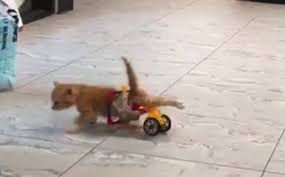 Paralyzed Kitten Gets Lego Wheelchair
Paralyzed Kitten Gets Lego Wheelchair
A kitten that was found paralyzed and abandoned by its mother on the streets of upstate New York has been given a unique makeshift wheelchair by a local veterinarian. This mobility device was made out of Legos! The staff at Massapequa Pet Vet staff gave the 5-week-old kitten the name Mac N'Cheez because it was brought to the shelter in a box of macaroni and cheese. The Lego wheelchair is only a temporary aid for the newborn kitten, since the vet has delivered the great news that presence of feeling in the kitten's legs means he might be able to walk again. So for now, Mac N'Cheez is undergoing lots of rehab, which includes swimming and working his reflexes remotely through an iPad. See video here.
Pictures of Your Pet Can Lift Your Mood
We all love our pets and whenever anyone feels socially rejected or sad, new research from Miami University shows that just a thought, or a picture of their pet, can lift their mood. In the study they also found that just thinking about another human did not produce the same effect. Those who worked on the study actually conducted three separate studies in which participants were asked to re-live past experiences of social rejection and afterward they were then asked to name pictures of animals with their feelings recorded and analyzed. Participants who thought of names for animals reported less negative emotions and feelings of rejection than those who did not. They found people who connect with animals to cope with their own loneliness are actually using an effective emotion-regulation strategy. For example, when college students are asked to re-live the pain of past social rejection, writing about their pet reduces feelings of rejection as effectively as writing about their best friend, both of which alleviate rejection more than drawing a map of their campus. The bottom line? Next time you're feeling socially rejected, look at any picture of an animal and give the animal in the photo a name. You'll feel the connection and feel better.
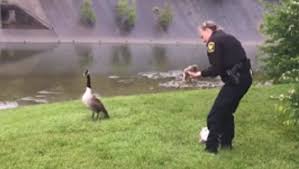 Goose Knocks on Police Cruiser for Help
Goose Knocks on Police Cruiser for Help
A mother goose recently knocked on the door of a Cincinnati police cruiser in her search for help for a gosling tangled in a Mylar balloon string. The officer in the car said he initially thought the goose was hungry when he discovered her pecking at the door of his car. He said the goose kept pecking and pecking. Normally they don't come near people, then it walked away and stopped and looked back with that, "What are you waiting for look!" so the officer followed it and the goose led him directly to the baby that was tangled up in a big wad of string attached to a balloon in a pile of litter in a creek. It was successfully removed and now everyone is fine again. See video here.
 Listen to the entire Podcast of this show (#860)
Listen to the entire Podcast of this show (#860)



 An old technology that embeds pesticide into clothing and fabric is now being used on pet wear, bedding and toys. PetEdge has introduced Insect Shield, which is a tick and flea deterrent used in everything from bandanas to coats. Dr. Katy explains how it works.
An old technology that embeds pesticide into clothing and fabric is now being used on pet wear, bedding and toys. PetEdge has introduced Insect Shield, which is a tick and flea deterrent used in everything from bandanas to coats. Dr. Katy explains how it works. Insect Shield Repellent Apparel has been proven and registered to repel mosquitoes, ticks, ants, flies, chiggers and midges. Insect Shield Repellent Gear has been proven and registered to repel mosquitoes, ticks, fleas, and flies. The EPA requires extensive effectiveness data to prove a product's ability to repel insects. Many species and varieties of these insects have been tested, including those that can carry dangerous diseases.
Insect Shield Repellent Apparel has been proven and registered to repel mosquitoes, ticks, ants, flies, chiggers and midges. Insect Shield Repellent Gear has been proven and registered to repel mosquitoes, ticks, fleas, and flies. The EPA requires extensive effectiveness data to prove a product's ability to repel insects. Many species and varieties of these insects have been tested, including those that can carry dangerous diseases. Because identification tags on a pet's collar or halter can come off, microchipping is an additional way to ensure that your pet will be returned to you if lost. However, microchips should not be used as a substitute for standard ID tags. A microchip is a tiny computer chip, the size of a rice grain, with an identification number programmed into it. It is not a tracking device.
Because identification tags on a pet's collar or halter can come off, microchipping is an additional way to ensure that your pet will be returned to you if lost. However, microchips should not be used as a substitute for standard ID tags. A microchip is a tiny computer chip, the size of a rice grain, with an identification number programmed into it. It is not a tracking device. Puppies and kittens can be microchipped as early as 8 weeks old. Microchips are suitable for almost any pet, including horses, reptiles, rabbits, birds, exotics, and even fish. It is an injection and while the needle is sharp, most animals don't even react. (I've even had clients ask about chipping people, but to date, it hasn't happened—although you never know!)
Puppies and kittens can be microchipped as early as 8 weeks old. Microchips are suitable for almost any pet, including horses, reptiles, rabbits, birds, exotics, and even fish. It is an injection and while the needle is sharp, most animals don't even react. (I've even had clients ask about chipping people, but to date, it hasn't happened—although you never know!)  Get Your Pet To the Vet Safely with No Escapees -
Get Your Pet To the Vet Safely with No Escapees -

 A proper fitting collar allows 2 finger widths between the collar and pet's neck. Allow more than, and should your pet put on the brakes, he'll easily slip out of the collar. Poor fitting harnesses are just as dangerous and allow gap room which allows a back-peddling pet to wiggle out. Not sure if the collar is too loose? Snug the collar up one fitting in anticipation of your trip to the vet.
A proper fitting collar allows 2 finger widths between the collar and pet's neck. Allow more than, and should your pet put on the brakes, he'll easily slip out of the collar. Poor fitting harnesses are just as dangerous and allow gap room which allows a back-peddling pet to wiggle out. Not sure if the collar is too loose? Snug the collar up one fitting in anticipation of your trip to the vet. Ok, so recently a research study concluded that most dogs don't like to be hugged. This comes on the heels of other studies and Internet breaking shockers like you shouldn't kiss your dog or let them kiss you, don't let them sleep in bed with you and also human children don't like to eat their vegetables. OK, the last one was obviously given to me by my young daughters…nice try, go eat some broccoli!
Ok, so recently a research study concluded that most dogs don't like to be hugged. This comes on the heels of other studies and Internet breaking shockers like you shouldn't kiss your dog or let them kiss you, don't let them sleep in bed with you and also human children don't like to eat their vegetables. OK, the last one was obviously given to me by my young daughters…nice try, go eat some broccoli!
 We don't force them to hug us or accept our hugs. We also don't demand they be there if they aren't feeling up to it. If your dogs don't want something, and it's not harmful to them, I have a hard time thinking of a reason to force them to do something.
We don't force them to hug us or accept our hugs. We also don't demand they be there if they aren't feeling up to it. If your dogs don't want something, and it's not harmful to them, I have a hard time thinking of a reason to force them to do something.
 Well, I know my dogs and I also know when they want to be left to themselves. I have shown my daughters how to be in tune with their temperaments and the needs of our pets. I watch and observe and give them the physical and emotional space they need, which can vary each day.
Well, I know my dogs and I also know when they want to be left to themselves. I have shown my daughters how to be in tune with their temperaments and the needs of our pets. I watch and observe and give them the physical and emotional space they need, which can vary each day.  Animal Radio News -
Animal Radio News -  Shelter Dog Finds Home in Shelter
Shelter Dog Finds Home in Shelter
 Paralyzed Kitten Gets Lego Wheelchair
Paralyzed Kitten Gets Lego Wheelchair